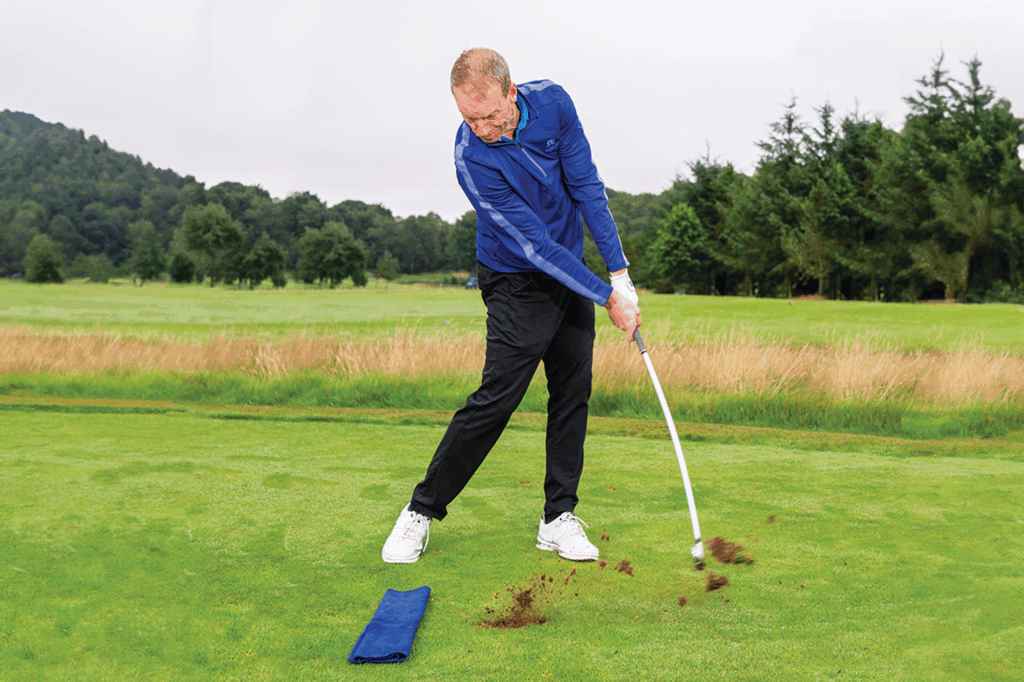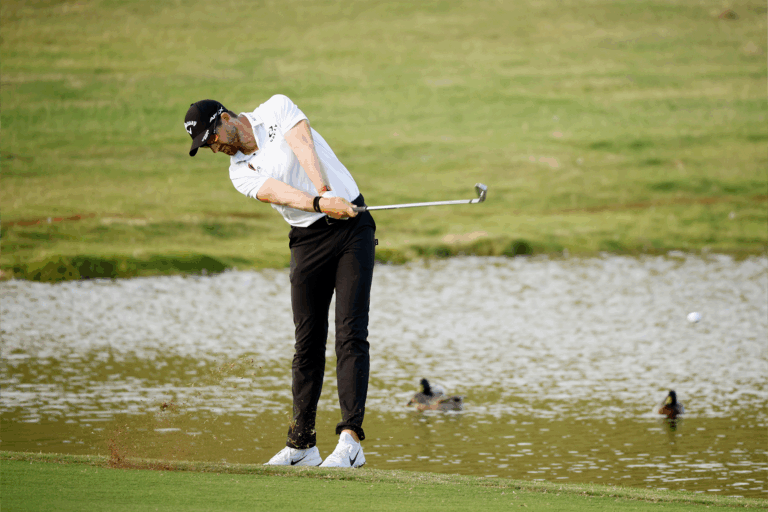Flighted iron shots are a tool every serious golfer should master. Yes, they are great to have in your arsenal on windy days, but they also bring precision, control, and versatility to your iron game. Here’s what they are, why they’re useful, and exactly how to hit them.
What Are Flighted Iron Shots?

A flighted iron shot is intentionally struck with a lower trajectory. Instead of launching high and spinning, the ball flies flatter and lands more softly, with less run-out upon landing. These are deliberate shots used to combat wind, target tight corridors, or hold firm greens with minimal roll.
Why Flighted Shots Matter
Steadier Ball Flight
Higher shots have more time to drift off line in wind or misread conditions. A flighted iron reduces airborne time, cutting down on curvature and increasing accuracy.
Controlled Landing
Flighted iron shots come with a steeper descent angle, which helps to minimize roll out on greens. This is crucial when shooting at pins protected by hazards or slopes.
Versatility into Firm or Windy Conditions
In firm fairways, a flighted shot won’t bounce past your landing zone. In a headwind, the lower profile keeps the ball under the gusts. Many Tour pros build these into their shot repertoire for reliable iron control.
How to Hit a Flighted Iron Shot

Adjust Ball Position and Setup
- Move the ball just slightly back of center. This de-lofts the club at impact and reduces launch.
- Grip down a half-inch or more for more control and less shaft flex during the swing.
- Increase shaft lean toward the target to compress the ball without adding height.
Use a Shorter Swing
- Three-quarter or compact backswing with controlled tempo.
- Use a reduced follow-through. Arms stay straight, wrists don’t re-hinge, and finish roughly waist-high.
- This keeps the clubhead under control and lowers trajectory without sacrificing strike quality.
Strike Down, Compress, and Rotate
- Aim for ball-first contact with a shallow divot following. This helps to promote compression.
- Let your body rotation control the stroke, keeping your arms connected to maintain rhythm and stability.
- Emphasize finishing balanced on your lead foot for repeatable setup and strike.
Use the Wind as a Cue
- Into a headwind: flight it even lower and trust the trajectory you see.
- With a tailwind: flighted shots can help you land softly and avoid run-offs to hazards.
- Crosswind? A lower flight gives less exposure to wind drift.
When to Use Flighted Shots
| Situation | Flighted Shot Advantage |
|---|---|
| Windy tee or fairway lies | Keeps trajectory lower and straighter |
| Approach into firm greens | Soft landing with minimal roll |
| Tight corridor or narrow green | Reduces swing height and drift |
| Flighting with wedges | More control and consistency within 100 yards |
Even short irons or wedges can benefit. Dialing them in using flighted techniques helps with distance control and reduces ballooning from full swings.
Tips to Practice Flighted Shots

- Towel drill: Place a towel just behind your ball and swing. Your club should miss the towel but hit the ball clean. This promotes ball-first contact with proper compression.
- Alignment stick setup drills: Set up sticks parallel to your target line and swing along the path to groove stable swing direction.
- Change up your ball position: Try shots from slightly forward, center, and back. Notice how launch and spin change.
- Range under pressure: Use flighted shots during windier practices or layup drills to simulate course conditions.
Final Thoughts
Flighted iron shots aren’t exotic, they’re essential. They give you a weapon when conditions demand control and precision over maximal height or spin. By adjusting ball position, grip, swing length, and sequencing, you can create a controlled, penetrating iron game with added flexibility for challenging situations.
Introduce these into practice. Work from 100‑200 yards first, then bring them into your on-course play. Soon you’ll find yourself more comfortable in situations that once felt out of reach.
